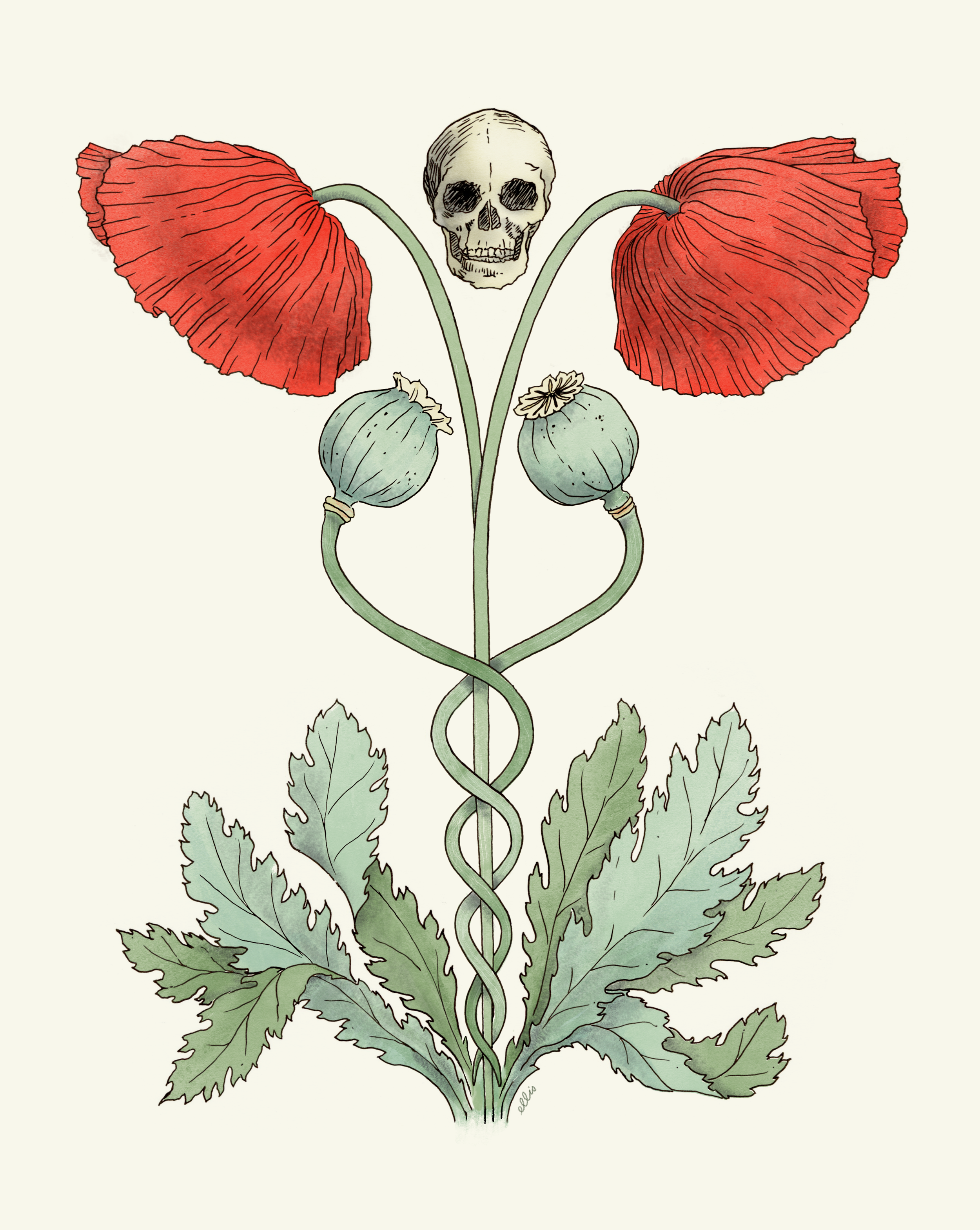The Dark History of Papaver somniferum
Papaver somniferum, otherwise known as the opium poppy, holds the incredible power to free us from pain. These poppies were considered sacred by the ancient Sumerians, bringing them, they believed, closer to God. Cut to the Victorian era, when Laudanum, a tincture of opium, was lavishly administered to treat everything from female hysteria to the sore gums of teething babies. Over the years the list goes on, to opium dens, heroin, and most recently and urgently, prescription painkillers.
But the addictive properties of chemicals in this species’ sap have been fatally discounted, swept under the rug for over a century. The pharmaceutical industry’s overprescription of these highly addictive substances has built financial fortunes at the expense of over a million lives of Americans who have died of overdoses since the late 1990s [(Mann, B. 2021, December 30) More than a million Americans have died from overdoses since the opioid epidemic. NPR.)]. Is this medicine, or something else?
With gratitude to the late Anna Laurent for generously sharing her research and passion for poppies, which helped inform and inspire this illustration.
Note: The Caduceus symbol was used as the shape and concept for this illustration with knowledge that the original, similar symbol representing medicine in fact uses only one snake wrapped around the rod of Asclepius. The version depicted here has become so widely recognized as a medical symbol since it was erroneously stamped on WWI medicine kits that it proved to be an effective visual vehicle for this concept.



